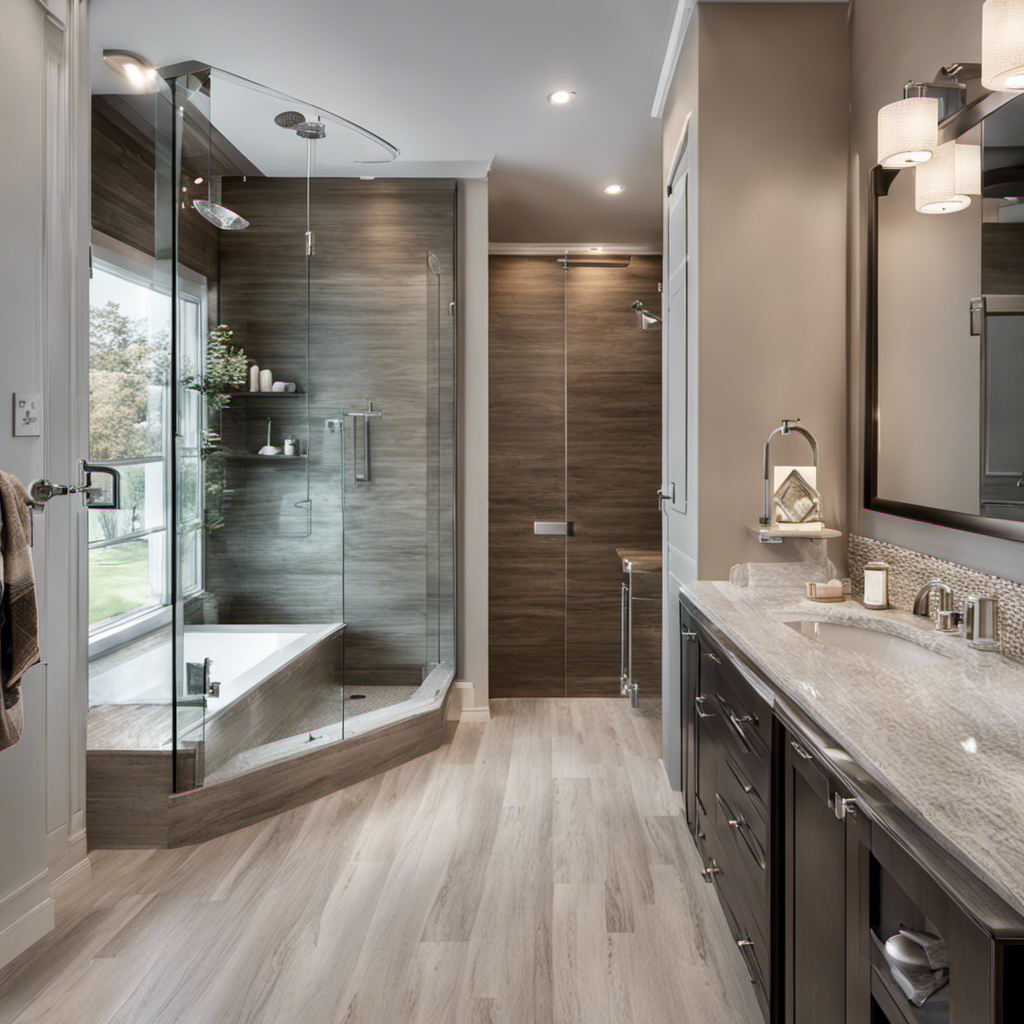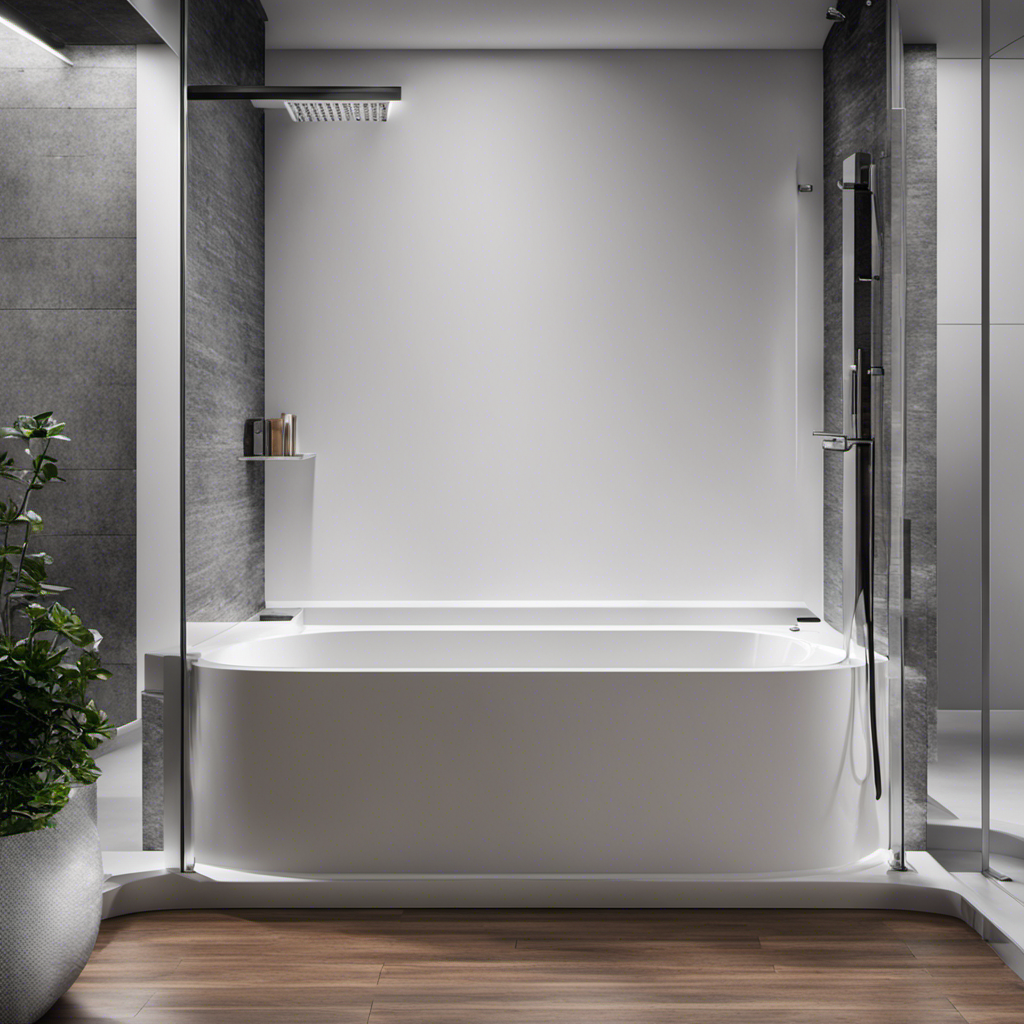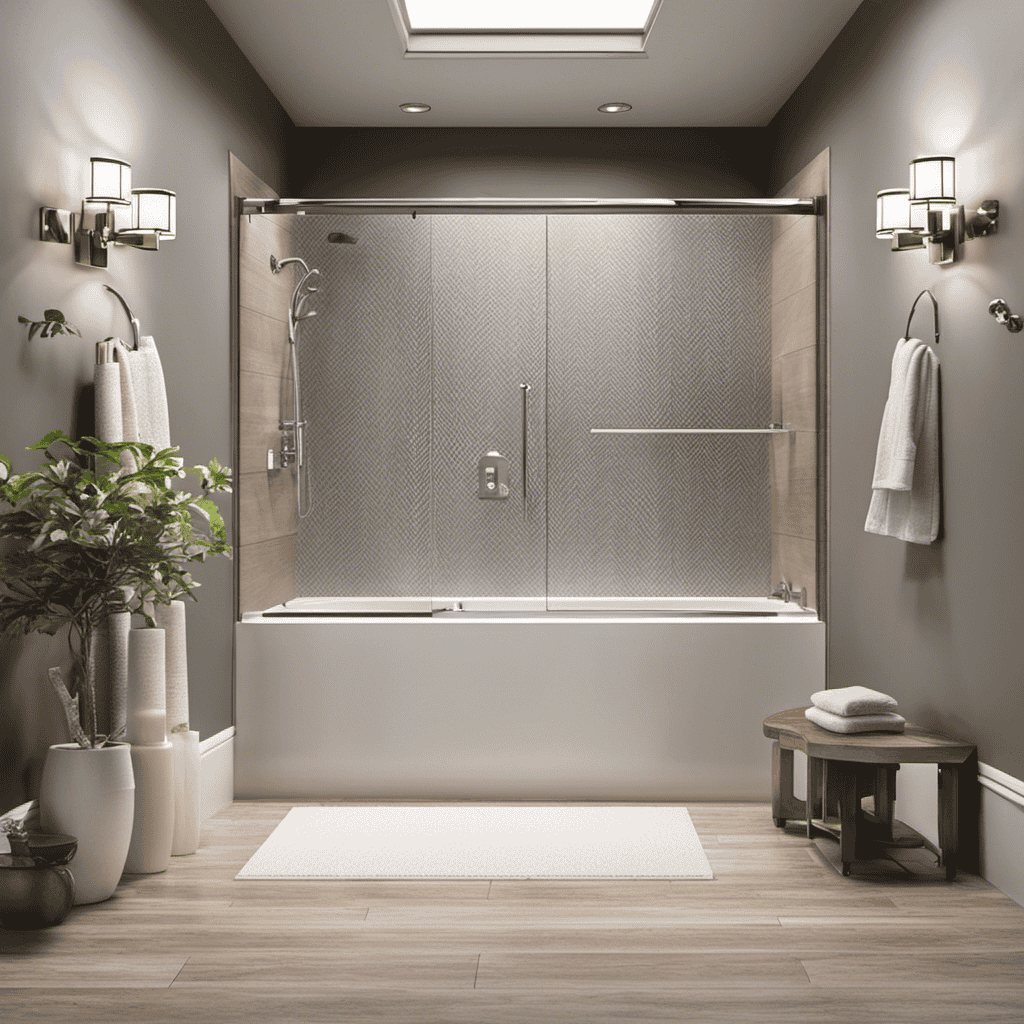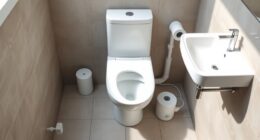I’ve always heard that ‘a change is as good as a holiday,’ and if you’re looking to transform your outdated bathtub into a modern walk-in shower, you’re in for a treat.
In this article, I’ll break down the costs and considerations involved in converting a bathtub to a walk-in shower. From the materials and labor charges to additional plumbing requirements and potential hidden costs, we’ll cover it all.
So let’s dive in and find out how much this exciting renovation project will set you back.
Key Takeaways
- The cost of materials and supplies can vary based on the quality and type of products chosen.
- Labor charges can vary depending on the complexity of the project.
- Hiring a professional plumber specializing in walk-in shower installations is necessary.
- Additional expenses may be associated with installing accessibility features.
Cost of Materials and Supplies
The cost of materials and supplies for converting a bathtub to a walk-in shower can vary depending on the quality and type of products you choose.
When considering the cost of installation for this remodeling process, it is essential to factor in the materials and supplies needed. The main components include a shower pan, shower door or curtain, plumbing fixtures, tiles or wall panels, and waterproofing materials.
Higher quality materials like natural stone tiles or glass shower doors may increase the overall cost. On the other hand, opting for more budget-friendly options such as acrylic shower pans and vinyl wall panels can help reduce expenses.
It is crucial to carefully research and compare prices to find the best options that fit your budget while ensuring the durability and functionality of your walk-in shower.
Labor Charges
Labor charges for converting a bathtub to a walk-in shower can vary depending on the complexity of the project.
When it comes to bathtub removal, the labor cost typically includes the disconnection and removal of the bathtub, as well as the disposal of any debris. The complexity of the removal process can affect the labor charges, especially if the bathtub is difficult to access or if there are any plumbing or structural issues.
Additionally, the installation of a new shower floor is an important part of the conversion process. The labor cost for this task involves the preparation of the subfloor, the installation of the shower pan, and the waterproofing of the shower floor.
It is crucial to hire a professional who specializes in this type of work to ensure a high-quality conversion and to avoid any potential issues in the future.
Additional Plumbing Requirements
To ensure a successful conversion, you’ll need to hire a professional plumber who specializes in walk-in shower installations. This is because additional plumbing requirements are necessary when converting a bathtub to a walk-in shower. Structural modifications may be needed to support the weight of the new shower and ensure its stability. Waterproofing considerations are also important to prevent water damage and leakage.
Here is a table summarizing the additional plumbing requirements:
| Additional Plumbing Requirements | Description |
|---|---|
| Drainage System | The existing drainage system may need to be modified or upgraded to accommodate the shower drain. |
| Water Supply | The water supply lines may need to be rerouted or extended to reach the new shower location. |
| Shower Valve | A new shower valve may need to be installed to control the water flow and temperature. |
| Showerhead | The existing showerhead may need to be replaced with a new one that is suitable for a walk-in shower. |
| Faucets | If the bathtub had separate hot and cold faucets, a new single-handle faucet may need to be installed. |
Accessibility Features and Upgrades
For improved accessibility, you should consider adding grab bars and a built-in shower seat to your bathroom. These features are essential for individuals with mobility issues or disabilities, as they provide support and stability while using the shower.
When it comes to design considerations, it’s important to choose grab bars that are securely mounted to the wall and can support the weight of the user. Look for ADA-compliant options that meet the necessary safety standards.
As for the shower seat, opt for a built-in bench or fold-down seat that is both comfortable and sturdy. Additionally, choosing the right shower fixtures is crucial. Consider installing a handheld showerhead with a flexible hose, as it allows for easy maneuverability and can be used while seated.
Potential Hidden Costs
Be aware that there may be additional expenses associated with installing accessibility features in your bathroom. These can include permits, materials, and necessary structural modifications.
Permit fees are a common cost when converting a bathtub to a walk-in shower. The fees will vary depending on your location and the specific requirements set by your local government. It is important to research and understand the permit process in your area to avoid any surprises.
In addition to permits, structural modifications may be necessary to create a safe and accessible walk-in shower. This could involve removing walls, installing support bars, or reinforcing the floor. The extent of these modifications will depend on the existing layout and condition of your bathroom.
To accurately estimate the costs associated with these modifications, it is recommended to consult with a professional contractor. They can assess the potential structural changes and provide an accurate cost estimate.
Conclusion
In conclusion, converting a bathtub to a walk-in shower can be a worthwhile investment for those looking to improve accessibility and functionality in their bathroom.
The cost of materials and supplies, along with labor charges, should be taken into consideration when budgeting for this project. Additionally, potential hidden costs and additional plumbing requirements may arise during the process.
However, with careful planning and the right professionals, this transformation can greatly enhance the overall value and convenience of your bathroom.
As the saying goes, ‘A penny saved is a penny earned,’ so make sure to research and compare prices to get the best deal possible.










